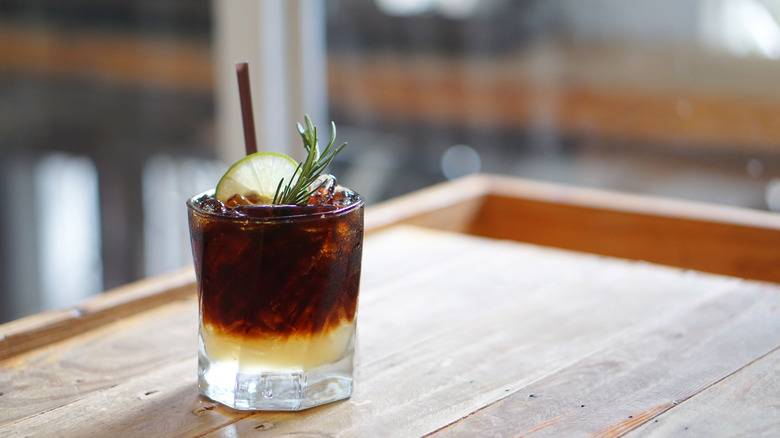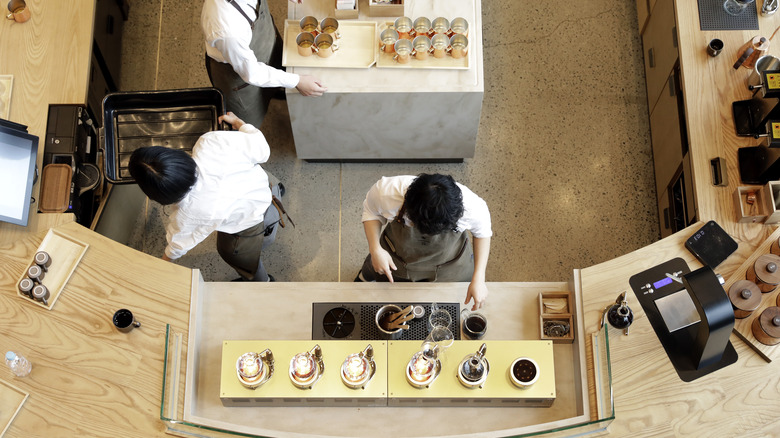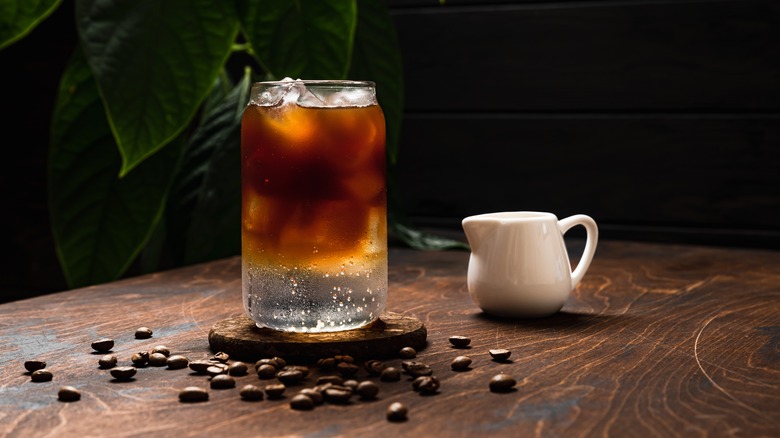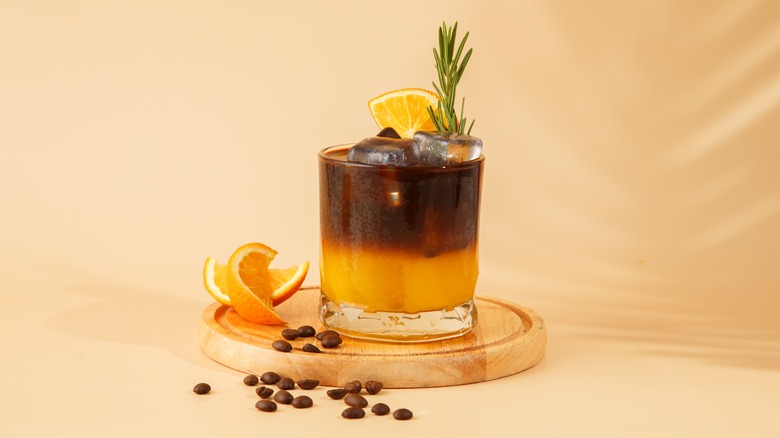What Makes Japan's Sparkling Coffee Unique?
From 16th-century Ottoman coffeehouses to the invention of the Italian espresso machine in 1901, coffee culture is always evolving (via Delish). Most recently, we've seen the rise of blended iced coffee, as well as cold brew and nitro trends. So it was only a matter of time before coffee had another identity switch — and this time, it's a whole lot bubblier. Because in Japan, at least, caffeine fans have landed firmly in the era of sparkling coffee.
Also known as espresso tonic, since around 2015, the drink has become wildly popular in Japan (via New Ground). And as highlighted in an Eater article published that same year, it was actually showing up in specialty coffee shops in the U.S. at the same time, including Box Kite in New York City and Saint Frank Coffee in San Francisco. Yet while sales of the drink grew and grew in Japan, it just never took off in the same way in the U.S.
But what is espresso tonic, exactly? In its most classic form, it is tonic water poured over a shot of espresso with ice. Yet the roots of this simple drink aren't at all clear. In fact, no one is 100% sure when it was first invented.
Espresso tonic might not have Japanese origins
Sure, some point to Manhattan Special's bottled sparkling coffee, which was launched in Brooklyn in 1895, but that drink is soda water-based (via Atlas Obscura), as is a similar longstanding Italian drink by Brasilena and Stappi, which was first launched in the early 1900s (via Made in Italia). In fact, according to Drink Trade, espresso with tonic was invented by two Swedish baristas in 2007, who dubbed it Kaffe & Tonic. As outlined by New Ground, several years later, the concept showed up in Japan when niche coffee shops and Kissates (retro cafes) began selling it. And it was Japan that made the drink its own, taking the idea, running with it, and devising a whole range of creative recipes.
The long, hot Tokyo summertime probably played a part. Because in contrast to simple iced coffee, espresso tonic offered a refreshing, effervescent edge perfect for humid days. Essentially, a strong burst of espresso combined with caffeine and fizz gives you a triple dose of pep. But why specifically tonic in coffee, rather than soda, seltzer, or mineral water?
Here's why coffee and tonic get along so well
For one thing, mixing up tonic water with espresso creates a totally different flavor profile to sparkling coffees made from soda. That's because tonic water has an added bitter zing from quinine, an anti-malarial medicine sourced from the bark of the cinchona tree (via Healthline). Yet, given that espresso can also be pretty bitter, shouldn't that make for an overpowering drink?
Not so. For one thing, tonic water tends to have sugar and sweetener added to tone down its bitterness (via MasterClass). And as New Ground explains, tonic actually complements coffee really well, as the former's citrusy flavor profile harmonizes with coffee's floral elements. After all, coffee has a lot more going for it taste-wise than the rich, chocolatey notes it's commonly known for — a good espresso tonic can elevate its fruit and flower layers. For this reason, Coffee Desk recommends using fruity African coffee when making your own sparkling coffee at home.
Yet Japan's caffeine alchemists haven't stopped at the simple espresso and tonic combo — in fact, they're still busy experimenting.
Why you need to try orange or cola in your coffee
As outlined by Tokyo Weekender, one popular variation is the citrus espresso tonic, which swaps the tonic for lemonade or mixes up the two. Other versions include lime, yuzu, or orange juice, plus a grape espresso tonic is served seasonally in Kyoto's Mamebaco (via Sharing Kyoto). And it's not as weird as it sounds — for instance, in Italy, espressos are often served with a slice of orange or lemon, which you squeeze over your drink for a flavor and aroma lift (via My Recipes).
Then there's the cola espresso tonic, which brings a nicely spiced layer to the concoction. That said, coffeehouses tend to favor craft colas in the mix rather than Coca-Cola or Pepsi. In fact, according to Japanese Food Guide, a craft cola movement has been growing in the country since 2018, so its crossover with the espresso tonic craze was only a matter of time. And as artisan colas such as Tokyo's Iyoshi include ingredients like vanilla, cloves, nutmeg, cinnamon, and cardamom, they can complement and elevate a good coffee (via Tokyo Updates).
Since the espresso tonic's popularity seems to be in no danger of waning in Japan, it's likely we'll see more variations. But the question is — will its popularity travel? Given that coffee fans never seem to lose their thirst for new twists on the drink, you might expect to see bubbly brews showing up at your neighborhood cafe in the future.



